#Ancient werewolves?
Explore tagged Tumblr posts
Text
Bitches be like : Fanon is better than canon ✋🙄
Their fanon :* Stiles and Derek play 1950s housewife and husband for 10k words or so. Derek has to insert a smirk, scowl or a growl in every line of dialogue. The rest of the characters are essentially furniture and are only allowed to speak when they are talking about Stiles,Derek or Stiles AND Derek. If we are feeling spicy that day, we can have Scott, Deaton and the Argents (except for Chris of course) lying in a ditch somewhere. *
#anti sterek#anti sterek fans#The seasons after 3b might be WACK#But the are certainly more interesting than this#Assassins?#Ancient werewolves?#Supernatural scientists?#Ghost cowboys that erase you from existence?#count me in
60 notes
·
View notes
Text
Hi, feel free to take my new uquiz to discover what kind of vampire you are!
#NO IM NOT TALKING ABOUT CHESS THE MUSICAL I DONT KNOW WHAT THAT IS. I AM TALKING ABOUT THE ANCIENT BOARD GAME:CHESS#uquiz#vampires#twilight#because let's be honest there are a fair few references#and maybe this is my twilight quiz which has been in my drafts for nearly a year!#and i was tired of it sitting there#maybe!#quiz#werewolves#mention#you can get human in this im really sorry#it's a bit of a mean result#oh if anyone has an actual picture of the vampire that killed dean winchester please send it along#i could not find it with a cursory google search but i rememeber he wore a clown mask#so maybe one of those guys is the guy?
27K notes
·
View notes
Text
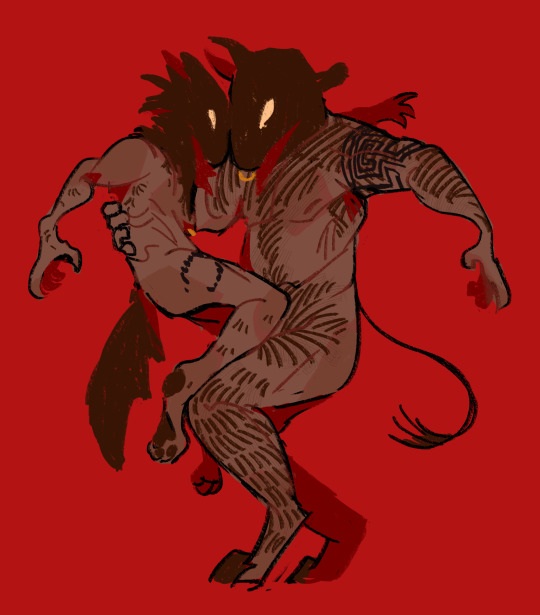
λυκάνθρωπος / Μινώταυρος
#caption is ''lycanthrope / minotaur'' in ancient greek. bc im feeling silly#i know that like really werewolves and the minotaur have nothing in common BUT THEYRE BOTH ANIMAL PEOPLE! u have to#understand. its about the abstraction from humanity while also existing SO close to it.#werewolf#aceart#werewolfisms#minotaur#my art
9K notes
·
View notes
Text
Dunes & Waters, part 14
PART 1 • PREVIOUS PART • NEXT PART
Even with magic, it takes a couple hours to clean up the office. It’s almost a miracle, but nothing important is damaged. With the exception of the little glass figurine they weren’t able to fix back together, everything is just as it was. Privately, Remus thinks the room was long overdue a good clean up – there were notes scattered about from scholars who’d long moved on from whatever they were researching there, and even the books couldn’t remember when they’d been alphabetised.
Remus thinks to wait. To give them both time to regroup and recuperate, but something tells him that right now, Sirius needs to feel needed. To have something to do other than smoking with a cat and failing at crossword puzzles. He’s a hurricane of energy, even when his magic isn’t going haywire, and he’s been stuck in that tiny cell with nothing to do and no one to talk to for months.
There is a trapdoor, hidden under the rug and with a separate enchantment only Remus and the curator knows about. Remus fixes it open and pulls out the Box.
“What’s that?” Sirius asks, because the Box is wrapped in a shaggy brown blanket.
Remus puts it on the desk. “This is your job.”
Underneath the blanket is brilliant gold, etchings inlaid with lapis lazuli depicting Wepwawet and Anubis facing one another. There is no lock, no trick, no puzzle to get it to open.
“It was found in Segin al-Kom during a muggle expedition in the late eighteen hundreds,” Remus explains, “then lost in the British Museum’s storage until someone tried to open it and the Ministry had to get involved. Poor bastard is still at Mungo’s, the rest of the workers had their memories wiped.”
“How did you come upon it?”
“Kingsley was the Auror sent to retrieve it. He knows of my research - we’ve worked together in the past – and thought I could know something about it.”
“But you don’t?”
“No. No clue. But here,” he points behind the ear of Wepwawet, where tiny blue crystals form a constellation, “this is-”
“Lupus. I know. And this one is Aquila. With Alshain in red.”
“That’s obscure knowledge.”
“Well. Not to me.”
It’s a sore topic, clearly, Sirius’ face scrunching up at the nose in a way that’s too adorable to be good for Remus’ heart.
“Great. You’re ahead then. Figure out how to open it, if it even opens. There is something loose inside if you shake it, but -”
And Sirius, because he’s impulsive and reactionary and impatient, shakes it, immediately getting a doze of electric shock.
“But that. Next time maybe let me finish my sentence. Save yourself the pain.”
Sirius, clearly embarrassed, grumbles something in response and smooths his hair out. “Had to check for myself.”
Remus leaves him to examine the box. He has his own things to get on with and he will do so, damn it, just as soon as he can tear his eyes away from Sirius’ fingers carefully tracing lines and patterns on the surface of the Box.
NEXT PART
@tealeavesandtrash
@moon-girl88
@hoje--aqui
@cocoabutterandbooks
@onion-sliced-apples
@prancingpony42
@digital-kam
@remoonysiriusly
@sweetstarryskies
@a-sunset-outside-my-window
@procrastinatingstuff
(let me know if you do/don’t want to be tagged!)
#wolfstar#remus lupin#sirius black#marauders#fanfic#dead gay wizards#remus x sirius#marauders era#microfiction#ancient egypt#werewolves#remus lupin x sirius black#remus loves sirius#sirius x lupin
47 notes
·
View notes
Text
IWTV S2 Ep1 Musings - Cezare Romulo: History through Visual Context in Ploiești, Romania (Pt2)
I am on the hunt for any and all information on AMC's OCs, The Vampire Daciana, and the Vampire Cezare Romulo.
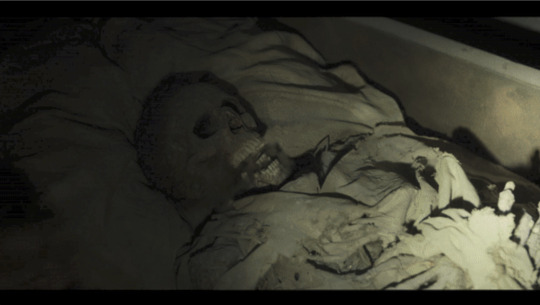
In Part 1, I pointed out that Daciana was likely AMC's nod paying homage to the Dacians (aka Geto-Dacians or Daci, as the Greco-Romans knew them), the ancient Romanians of c. 10th century BC - 7th century AD, in the Transylvanian/Wallachian regions of the Carpathian Mountains.
In AR's TVC, vampires tend to reflect the era they lived/died in, preferring to wear their traditional clothes & surround themselves with antiques from their time period--like grave goods for the dead. However, from what I've found, there was nothing about Daciana's clothes/home indicating that she was an ancient Dacian (X).
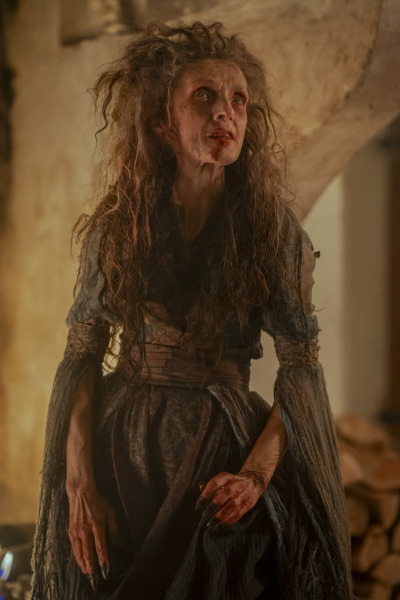
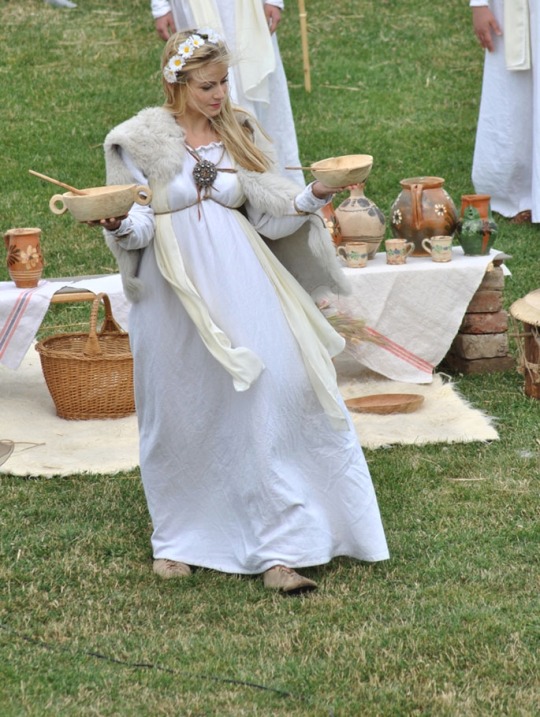

(Granted, if she IS that old, then that definitely increases her odds of being an "Old God" that got caught in the Great Burning.... 👀)
Regardless, I wanna turn my attention to Cezare Romulo, cuz while I'm tentatively ruling out Daciana as being Dacian, I haven't dug into The Vampire Cezare yet. So here goes nothing!

Nomenclature
First thing that stood out to me is his name. Cezare's obvs Caesar, but I wonder if that's his name, or his title (like how the Latin caesar became kaiser in German & tsar in Russian).

In Oltenia (Wallachia) there are archaeological remains of a Roman-Dacian fort called Romula, dated to the 2nd century AD. I couldn't find much about it, so we'll just put a pin in that. Something way cooler is that according to Google Translate, Romulo means Romulus, in both Romanian & Italian. That's hella interesting, cuz Romulus was the founder of Rome (8th century BC), twin brother of Remus, whom he killed Cain vs Abel style to be the ruler. In some versions, Romulus "died" under VERY mysterious circumstances:
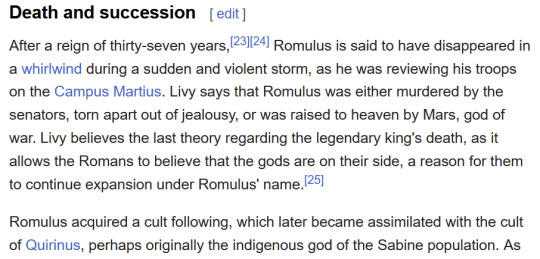
So for AMC's OC vampire to be named after two Romans (Caesar & Romulus) who were both incredibly violent & bloodthirsty rulers says a lot. Especially considering with how Daciana described him:


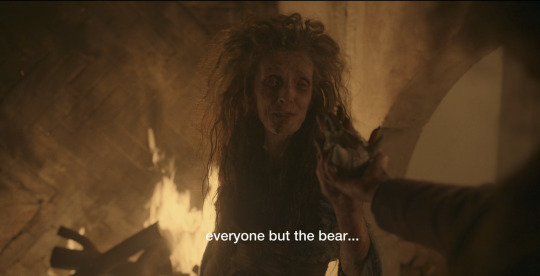
The Castle: Bears & Wolves (Totems & Crests)
Cezare killed a whole circus troupe traveling through Transylvania (Sibiu), and only spared their bear. I wondered why this was so noteworthy--vampires will kill anyone for food (or sport), esp. if they don't follow the creed about only killing Evil Doers (as Cezare obvs. didn't--unless he knew something about that troupe we don't...! 👀 Clowns ARE evil, after all 💀). Vamps don't tend to kill animals, unless they need to defend themselves--but aren't circus bears kept in cages or something? So why would it matter?
So I reckon that Daciana's point was actually that Cezare LIKED the bear, and probably KEPT it, as his pet.
Cuz look at his castle: the joint's filled with taxidermy.
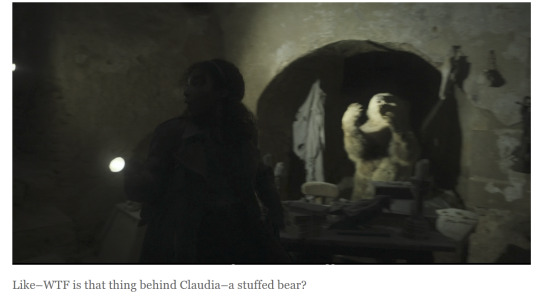

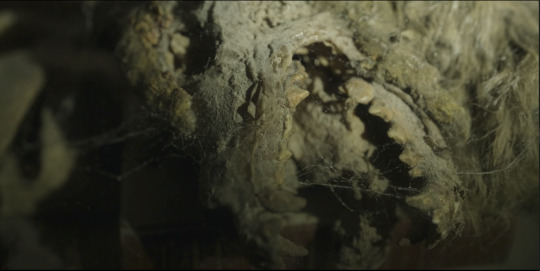
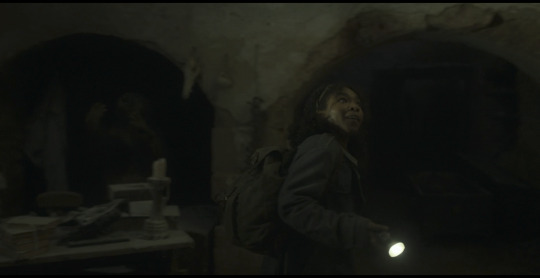
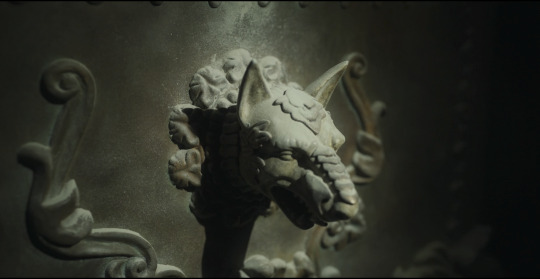
I think some of these animals are bears and/or wolves (Romulus & Remus were raised by wolves in the woods....). And that tracks with what is known about the main Dacian animal, the wolf (or "Draco"/dragon), (X X X).
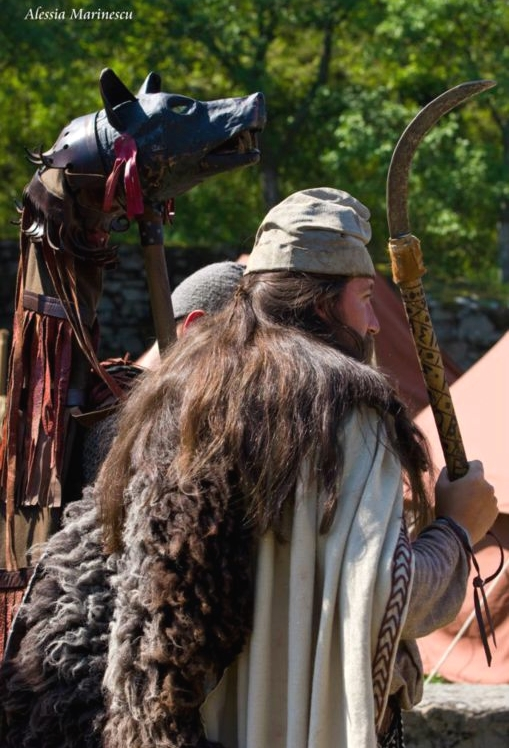

Sava, Cipriana. "Cultural heritage tourism--Dacian fortresses in the Orăştie area, Romania." MEFkon 2020 INNOVATION AS AN INITIATOR OF THE DEVELOPMENT. (2020): 290-311.

Strechie, Mădălina. "The Dacians, the Wolf Warriors." In International Conference Knowledge-Based Organization, vol. 23, no. 2, pp. 367-373. 2017.
(ISTG when is AMC bringing AR's Wolf Gift books into the Immortals Universe--I need my werewolves already, gosh darnit!)
Cezare clearly felt a strong affinity for animals, especially bears.

Which isn't surprising, considering the life-death-rebirth symbolism of the bear in Romanian traditions like the Ursului (bear dances).

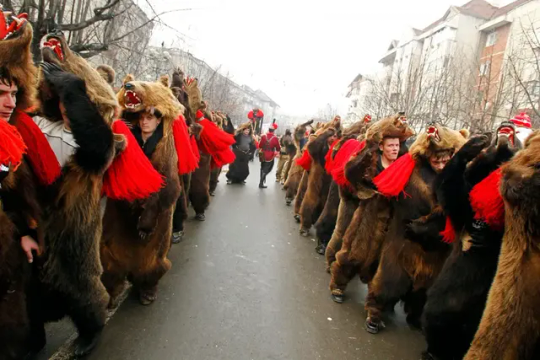
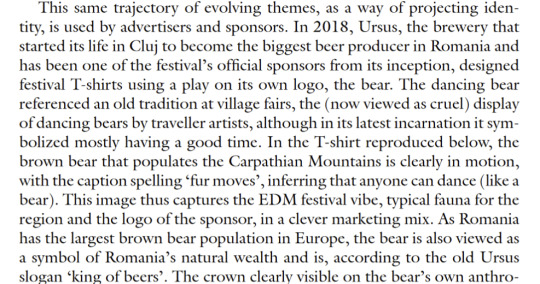
Trandafoiu, Ruxandra. "A Tale of Two (or# EverMore) Festivals: Electronic Music in a Transylvanian Town." Eastern European Popular Music in a Transnational Context: Beyond the Borders (2019): 213-237.
The Castle: Architecture
As for Cezare's castle ruins, I have no idea what's going on.

The most interesting thing was Cezare's final resting place in this catacomb-like structure, lying in a stone sarcophagus.
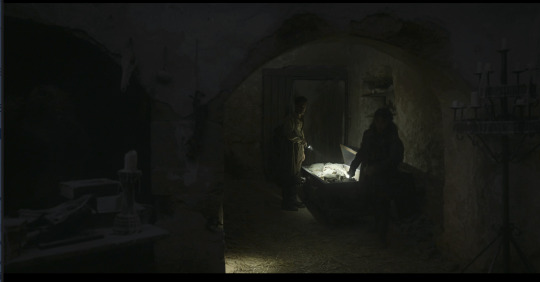
Like, there are Roman-era burials found across Romania, but Cezare having a STONE sarcophagus is interesting, cuz apparently Transylvania's Daco-Roman inhumations are more often brick:

As stone sarcophagi only became more popular around the 3rd-4th century AD
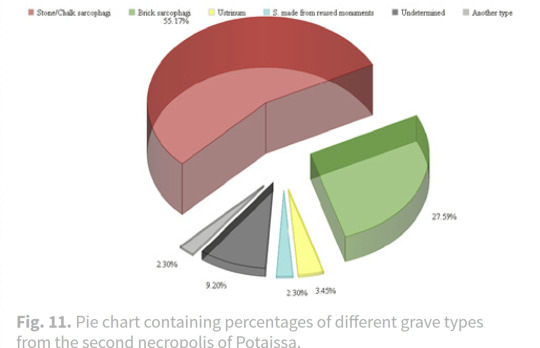
Cocis, Horatiu. "Some remarks on the Roman necropolises of Potaissa." Journal of Ancient History and Archaeology 2, no. 2 (2015).
Before largely falling out of favor/use by the 5th-6th century AD, except for clergy & royalty:

Maggio, Ariane. "Burial Practices in Europe." Encyclopedia of Global Archaeology (2018): 1-6.
So, does this possibly give us a date for him, approx 2nd-6th century AD? But how long was it until he died? (HOW did he even die?)
What about the rest of his castle? Like, the place is an utter ruin, and there's barely anything left of that dark AF exterior that I can use.

Is this a studio set, or was it filmed on location somewhere? IDFK. There's hundreds of Romanian archaeological sites--let alone Daco-Roman ones--it kinda reminds me of davas (fortresses/strongholds), (X X), if not for the masonry being different.

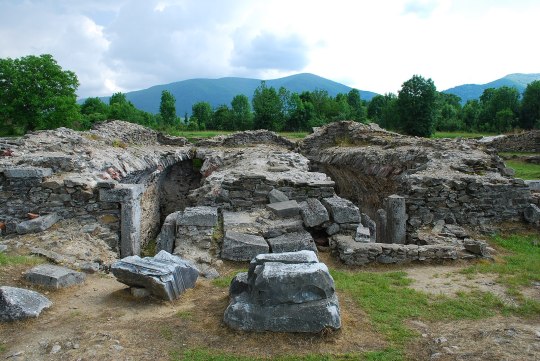
So yeah, I have no frikkin clue, y'all; this is all I've got, LOL. ¯\_(ツ)_/¯
Results? Inconclusive! Again! 😂😭
I don't know if AMC was deliberately implying that Cezare Romulo (or Daciana) had anything to do with the ancient Daco-Romans...but it's interesting to think about!
#interview with the vampire#the vampire daciana#iwtv tvc metas#werewolves#ancient rome#medieval europe#read a dang history book
33 notes
·
View notes
Note
Good luck to revelation on dismantling the unfair punishment of monsterization and the whole scapegoat thing
I’m not sure if the punishments are a good or bad thing but I’m assuming it’s bad because it seems really unfair towards some monsters, especially the werewolves
It's kind of moot at this point.. ending some spells wouldn't turn monsters back into people, they have been monsters for thousands of years. A disruption of the basic world state strong enough to change that would indeed be a type of apocalypse. Most people - 99.99999% of people - have no memory of why monsters exist, there are no werewolves going "agh I wish I hadn't been twisted into this form". It's just all anyone alive who's not a wyrm has ever known.
Binding hundreds of people into an ever-marching doomsday cult is as the kids say "not cool"
#im on revelation's side for a lot of stuff but the methods.. the methods are questionable#ice storm over kosa#because I've been going into the ancient history a bit more i guess it's unclear that only the wyrms know it#the werewolves don't view any of their existence as punishment because the idea of punishment just doesn't enter their minds#like you wouldn't think of your human lack of night vision as a punishment it just Is. it's how your body works
43 notes
·
View notes
Text
Father said Patience is a virtue.
Wait, he said.
So, I waited.
Wait, he said again.
So, I waited. Is 2000 years long enough, Father?
#angels#demons#gods#vampires#werewolves#zombies#pirates#chaos#kaos#good omens#dan brown#sandman#american gods#supernatural#star wars#crowley#rose#lord of the rings#game of thrones#house of the dragon#doctor who#aliens#ancient aliens#marvel#pirates of the caribbean#our flag means death#tiki wiki#batty matty#the boys#where are all my boys
7 notes
·
View notes
Text
i think what people should know about me is i’m a monster fucker first and foremost
#monster fucker#werewolves#vampires#nasty heinous creatures#count orlok#big festering old ancient fucks#sign me up
17 notes
·
View notes
Text
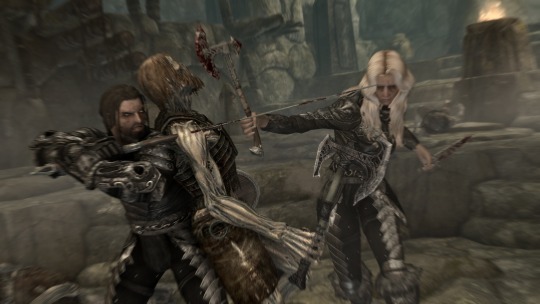
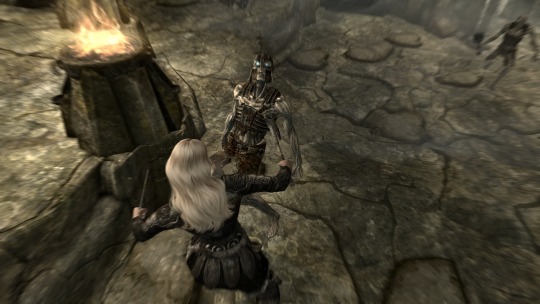
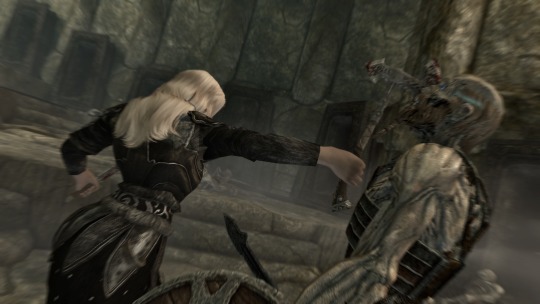
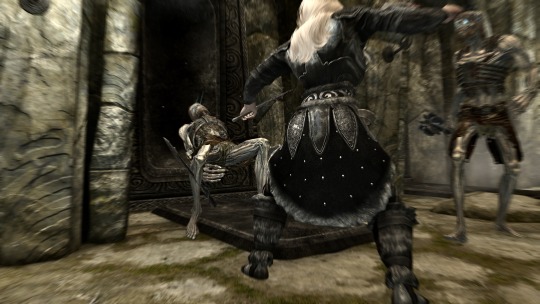
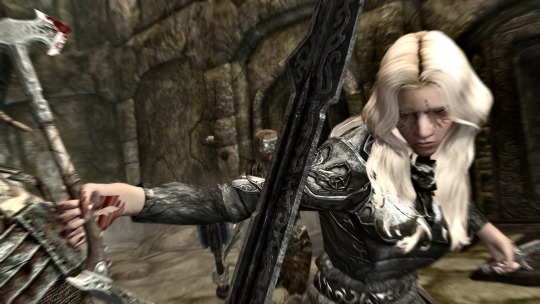
#x#hiljas#farkas#skyrim#skyrim screenshots#skyrim screencaps#tesv#skyrim scenery#tesv screenshot#tes v skyrim#oc#werewolves#werewolf#proving honor#the companions#the circle#dustman's cairn#ancient nord ruins
13 notes
·
View notes
Text
Werewolf Fact #69 (dude!) - Ancient Egypt
Well, I thought this month would be about something else, but my patrons spoke differently! And I always listen to my patrons when it comes to folklore facts.
So, without further ado, let’s finally get back to werewolf facts! This is a big one, as it’s a lifelong favorite topic of mine!

An ancient Egyptian mask worn by a priest during rites performed for the dead, who would have “taken on the aspect” of the wolf-headed god Anubis
Let me just open by saying that I absolutely love ancient Egypt. It’s fascinated me since I was a small child and I was reading a tiny children’s book about cats, and ancient Egypt was discussed. Naturally, when I found out about Anubis, I was even more interested. Then came games like Age of Mythology and many movies... especially The Mummy (1999), of course. Anyway!
Ancient Egypt didn’t have a negative opinion of wolves. In fact, several important deities had wolf heads and were associated with wolves. Let’s begin with something that’s always interested me, which is the city of Lykopolis (as it was called in Greek)...
More under the cut, since this post got so lengthy!
Lykopolis (ancient Egyptian transliteration is something like “Zawty”) was an important city located on the western bank of the Nile, capital of the Thirteenth Nome of Upper Egypt during about 3100 BC. The primary deities of the city were - as you might imagine - Anubis and Wepwawet, both wolf-headed gods. Mummified wolves (golden wolves, not jackals; more on this momentarily) have been found in various excavated chambers throughout the city ruins, of which very little still survives.
The city has a very fun story behind it, as told by Greek historian Diodorus Siculus. In the first century BC, an army of Nubians invaded from the south - but they were repelled by packs of wolves. These wolves drove the army from the southern borders of Lykopolis and then back beyond the borders of Egypt. According to Diodorus, this is why Lykopolis was called “the city of the wolf” and revered wolves and wolf-deities so greatly.
Some sources claim that these wolves were summoned by the god Osiris, who was also worshiped as a wolf in Lykopolis, and had also, at one point, taken the form of a wolf. I will admit I personally haven’t read this source, as it’s in French, so I can’t fully attest to that element of the story - I haven’t seen that one cited very often in various specifically ancient Egypt history sources. Regardless, it’s fun if true. Either way, the tale of the wolves driving back Egypt’s enemies was definitely recounted in detail in a primary historical source!
By the way, you’ll hear a lot of people refer to these deities as “jackal-headed.” It’s very popular still to call Anubis the “jackal god.” We now know, though, that the animals in question were in fact not jackals - they were indeed wolves. Scientists for a long time asserted that they for some reason knew things better than the ancient Egyptians and Greeks who actually lived during the time period and retroactively dictated that they weren’t wolf gods, they were jackal gods.
However, the Egyptian jackal was discovered to be a species of gray wolf. You can read a lot about that here in this article, regarding how people didn’t believe wolves lived in the area during those time periods, but we found out they did, and we also found out that the mummified wolves in Lykopolis were - yes - wolves, like their contemporary cultures said.
A quote from the article: “the Egyptian jackal is in fact a gray wolf. ‘We now know that wolves were indeed in Africa in the days of the ancient Egyptians—and long, long before,’ says Stenseth.”
I honestly don’t know why everyone thought wolves couldn’t have lived in the area during these time periods (when we know perfectly well a wide variety of animals inhabited regions they no longer inhabit, and that we discover new species in the deserts even to this day) or decided the ancients didn’t know what they were talking about, but anyway...
Another fun fact, by the way, is that the word “jackal” didn’t even enter the English language until the 1600s, borrowed from French, which in turn was most likely borrowed from Persian - not Egyptian. The animals in Egypt were wolves, and we now know that they were also wolves scientifically. In fact, some scientists even believe it’s possible that jackals (as in actual scientific jackals, not golden wolves) didn’t find their way into the Egyptian region until much later, when these wolf gods would have been well-established. They may have followed travelers out of Arabia. This is speculation, though, but regardless, the long-believed-to-be “jackals” of ancient Egypt were all wolves. So it sounds like we should’ve believed the ancient Egyptians and Greeks in the first place, huh?
Long story short - Lykopolis was indeed a wolf city, wolves drove invaders out of Egypt, and Anubis, Wepwawet, and Duamutef were wolf gods. Not jackals.
Please note that there are those who would argue with me that some of them are jackals and some are wolves, or that they were all jackals, or whatever else, but in my personal opinion (and the opinion of many historians and scientists), it’s very clear across depictions, mummified wolves, historical accounts from both Egyptians and Greeks, etc., that these many Egyptian wolf-related beings were what we now call “golden wolves” or “Egyptian wolves” (and sometimes referred to as “jackals” still despite their genetics), which are indeed gray wolves, and not a species of true (genetic) jackals. There also exist theories that these wolves are something that no longer exists, and also that the modern animals we have are interbred wolves and jackals. Theories abound, whatever the case.
Then of course there are those who say that Anubis was the jackal-headed god and Wepwawet was the wolf-headed god, due in no small part to inherent biases that wolves only come in “gray.” I think those are all very silly, especially as we already know that colors in ancient Egypt were highly associated with ritual and meaning, rather than directly stating that Anubis’s head was black because he’s some kind of black-backed jackal - which don’t even have black heads, anyway. We have multiple associations between Anubis and wolves, and just because Wepwawet was often depicted with a grey or white head doesn’t make him a wolf and Anubis something different. Therefore, I personally will continue to refer to all of these as wolf-headed gods, and I apologize if that bothers anyone.
Sorry. Brief Mav-rant there. More important things to follow, because we haven’t even talked about those deities yet!
So now let’s talk about these gods themselves...

Anubis in the book of the dead (which was not actually a book)
Easily my favorite thing in all of ancient Egyptian mythology, Anubis (known by many other epithets, including but not at all limited to "Lord of the Sacred Land," "He Who is Upon his Sacred Mountain," "Master of Secrets," and "He Who is in the Place of Embalming”) is the god of the dead. He was the protector of graves, guardian of the dead, the shepherd of souls passing into the afterlife, and many more roles, including the ever-important Weighing of the Heart (as seen above), the results of which would dictate whether or not someone was allowed to enter the afterlife - or if their heart was devoured by the monster Ammit and their soul destroyed forever.
Anubis was depicted with the black head of a wolf. His head was colored black because black was the color associated with life, the life-giving soil of the Nile River, regeneration, and embalmed bodies, and he, of course, is also the god of mummification. Anubis is one of the single most important deities in all of ancient Egypt, depicted and mentioned very frequently, even more than most any other deity - however, despite this, there are almost no stories actually involving him.
But no, Anubis was not “evil,” as much of modern pop culture would have you believe! (Sorry The Mummy Returns, I love you to death, I really do - but it was super rude to make Anubis evil.)
Long story short, Anubis was freaking awesome, and there’s way too much to say about him and his awesomeness for just one post. Maybe I’ll do a separate post all about him later, because he’s a personal obsession of mine.
Anubis’s brother (at least, he is considered to be this by some) was the god Wepwawet, another wolf-headed deity. Wepwawet was a man with a white or grey head of a wolf (though some think he may have also had a black head like Anubis, but others claim that is not the cause and the coloring was on purpose as we have seen it in too many different places - still more claim it was just the artist’s preference; it’s hard to know any of these things for sure)...

Wepwawet with Pharaoh Seti I (try not to read that in Ardeth Bay’s voice, I dare you. I don’t know why you wouldn’t want to, though)
Like basically all deities of ancient Egypt, Wepwawet is a complicated god, a deity involved in some funerary rites, but especially associated with war and royalty. Wepwawet means “opener of the ways,” and he was depicted as a man with the head of a grey or white wolf, as well as wolf at the prow of a solar boat, sometimes said to lead armies, to scout, and even to have the honor of going before the pharaoh himself. He is also known by the title “one with sharp arrows more powerful than the gods.”
A very important god, Wepwawet is one of the oldest gods of Egypt ever recorded, and he was always associated directly with royalty and specially the pharaoh. He was said to accompany the pharaoh on his hunts, as well as protecting the pharaoh in life and the afterlife - he is a symbol of divinity of rule and of kings in general. He is, for certain, a very good deity, rather than some kind of evil wolf of Western literature.
And lastly among the prominent wolf-headed deities, we have one of the four sons of Horus, Duamutef...

The four sons of Horus were depicted upon the canopic jars (jars containing certain organs of the mummified dead) starting in the First Intermediate Period of Egyptian history, which was around 2181-2055 BC. Each deity protected a different important organ; Duamutef, the wolf-headed god, always protected the stomach and represented the direction of the east. Please note he was not always depicted with a black head like Anubis; sometimes he also had a white or grey head. It varied. Likewise, in later periods, the forms of these various gods were sometimes mixed up, and a different son of Horus would have the wolf head. These deities were depicted not only on the canopic jars, but also on many other funerary artifacts, including the sarcophagi that would contain the jars.
So we have all these wolf-headed deities... but does any of this tie into werewolves at all?
Well, it doesn’t, really. There seems to be no indication that Anubis, Wepwawet, Duamutef, or anyone else did any particular shapeshifting, and they certainly weren’t cursed. They were gods. Anubis and Wepwawet are both sometimes depicted as simply a wolf as opposed to a wolf-headed man - as many of the Egyptian gods are depicted as their animal counterparts, including Ra, Horus, Hathor, Sobek, and many, many others - but that’s merely his animal aspect counterpart. Depictions and aspects of the gods of ancient Egypt (and also, later, how Rome and Egypt intermingled some of their deities during the Roman occupation, such as Hermanubis) are extremely in-depth topics. I’ve always loved studying them, but they are immensely complicated - certainly far too complicated for this post! So let’s get back to the matter at hand...
I’ll be honest, I have yet to find a credibly-sourced legend that talks about anything like an ancient Egyptian “werewolf.” I’m pretty darn sure they didn’t have anything remotely like what we consider among actual werewolf legends, my friends, and especially none that meet my personal criteria. The ancient Greeks, however, absolutely did, as you probably know if you’ve spent time browsing my werewolf facts masterlist (link at the bottom of this post!).
Wolf-headed gods, however - yes, they definitely had those, and no, they were not “evil gods.” In fact, some of them were very highly revered and associated directly with necessary aspects of life and death, as well as with pharaohs.
Speaking of, if you love ancient Egypt (and also adventure movies), you should absolutely check out my new novella that came out just this past June - Wulfgard: The Tomb of Ankhu!

It is the first of two short novellas that tell an exciting tale about adventure, an ancient curse, mummies, memorable characters, and last but not least lots of Anubis and other legends, all of it set in the vast ancient-medieval dark age fantasy realm of Wulfgard: a world where all myths are true.
Every book release means the world to me, and this one is no different. I’m very proud of this story, and I really think you’ll enjoy it.
Deep in the southernmost deserts of Wulfgard lies the resting place of Pharaoh Ankhu the Endless, one of the greatest evils the land of Kemhet, or the world, has ever known. So terrible was his power that the gods themselves cursed him, sealing him away in an underground labyrinth. Ankhu rises with each darkening of the moon, a walking mummy, wandering this tomb in search of his own still-beating heart, without which he can never reach the afterlife.
Over untold ages, Ankhu’s tomb remained undiscovered, a secret protected always by the loyal Medjai, an order sworn to guard Kemhet from all threats. And now, a new threat has arisen: Lord Tefnahkt the Red, a powerful warlock, drives his cult and his many slaves to uncover Pharaoh Ankhu’s resting place and steal the mummy's power.
While a small group of Medjai desperately work to stop Tefnahkt’s plans, one slave may become the key to putting an end to this evil once and for all: Djedar Rath. In a race against time, Djedar must lead the Medjai to prevent Tefnahkt from opening the tomb of Ankhu before the coming of the new moon, when the undead Pharaoh will awaken once more. For, if Ankhu escapes, the world will never survive his wrath.
Inspired heavily by real-world ancient Egyptian and other mythologies - but with many original additions and elements - as well as the classic character-driven adventure genre that mixes aspects of action, thriller, and horror, with a tasteful sprinkling of levity, The Tomb of Ankhu is a tale of non-stop adventure and excitement that will leave you on the edge of your seat! Now available in ebook and paperback!
Go here to purchase on Amazon! https://www.amazon.com/dp/B0C8897R1K
Readers have been really enjoying this one! The second one has been in the works for quite some time already, so expect news about that in the coming months, as well.
Hope you enjoyed the werewolf fact this month, even if it was kind of more a wolf fact. But, myself, I have spent my entire life captivated by ancient Egypt, so I love this kind of stuff.
Thanks for reading, and until next time!
( If you like my werewolf blog, be sure to follow me here and check out my other stuff! Please consider supporting me on Patreon or donating on Ko-fi if you’d like to see me continue my works, including my folklore blog and writing my own novels, werewolf and otherwise. Every little bit helps so much.
Patreon — Personal Website (new and improved! Great starting point!) — Ko-fi — Wulfgard — Werewolf Fact Masterlist — Twitter — Vampire Fact Masterlist )
#werewolf#werewolves#werewolf fact#werewolf wednesday#werewolfwednesday#werewolf facts#folklore#folklore facts#mythology#mythology facts#ancient egypt#egypt#egyptian#ancient egyptian#anubis#wepwawet#wolf gods#wolf mythology#wolves#wolf#legend#legends#ancient world#osiris#ancient egyptian gods#egyptian gods#long post#research#lykos#jackal
86 notes
·
View notes
Text
@mcr-reference

#mcr#my chem#my chemical romance#horror movies#witchcraft#david bowie#tim curry#iced coffee#demons#ghosts#haunted#skinwalker#aliens#bermuda triangle#torture#werewolves#vampire#ancient egypt#cryptid
24 notes
·
View notes
Text
next gen era
#pyxis leela black#ascella carmen lupin black#cefeusz ambrose lupin black#ceres marisol lupin black#fanfic#polska#wattpad#hogwarts#wizarding schools#slytherin#hufflepuff#ravenclaw#next gen harry potter#next gen oc#female oc#male oc#werewolves#sequel fic#tiana adara lupin black#wolfstar grandchildren#panna black pbielik#pbielik#harry potter fandom#fred weasley#michael ambing#weasley family#noble and most ancient house of black#de la familia rodriguez#aurors#dark magic
10 notes
·
View notes
Text
Werewolves in Ancient Warfare
Werewolves show up in a lot of different types of ancient war stories. They were both scary mythical creatures and symbols of the wild power and supernatural skill that fighters tried to embody. From the cold Norse lands to the dense forests of Eastern Europe and beyond, these stories show that people have always been interested in the idea that humans can get past their natural limits by calling on animal power.
When it comes to the Norse, the berserkers and úlfhéðnar (wolf coats) are two of the best examples of this. The berserkers, whose name derives from the word "bear-shirts," were fighters who wore bear skins and were thought to be so angry that they could almost not be hurt in battle. They were known for being very strong, not feeling pain, and becoming enraged very quickly, which made them fight like wild animals. Similarly, they wore wolf coats and were believed to possess the wolf's spirit. People thought that these fighters had sharper senses, were very strong, and were always hunting. Historical accounts and sagas recount the amazing feats these fighters accomplished, seemingly beyond human comprehension. People often attribute their strength to divine intervention or a supernatural change.

The link between the berserkers, the úlfhéðnar, and the god Odin emphasizes the spiritual side of these changes. Odin was a god of war, magic, and knowledge. People often depicted Odin with wolves and ravens. People saw the berserkers and úlfhéðnar as his chosen fighters because they were empowered to go beyond human limits and connect with nature's basic forces. This connection to the gods not only raised their status as fighters, but it also gave the idea of turning into a werewolf a holy and scary quality.
King Lycaon's story is the best example of lycanthropy in Greek and Roman mythology. Lycanthropy means changing into a wolf. The story goes that Lycaon, king of Arcadia, tried to trick Zeus by giving him food made from the flesh of a child who had been killed. As a punishment, Zeus turned Lycaon into a wolf and threw him out into the wild to live as a wild animal. The mythological background of the word "lycanthropy" underscores the connection between unkindness towards others and the loss of humanity, symbolized by the transformation into a wolf. Even though it has nothing to do with war, the concept of lycanthropy led to later ideas about fierce fighters who seemed to channel the spirit of the wolf in battle. People still thought that fighters had wolf-like traits, which meant that individuals who were very violent and strong might be channeling a wolf spirit and blurring the lines between humans and animals.
The ancient Gauls also believed that warriors could change, especially through their druidic practices. The Druids, as the spiritual leaders of the Gaulish tribes, were thought to know a lot about nature and be able to change their appearance. Some warriors believed that they had a strong link to nature because they could change into wolves. People believed that the warriors possessed the cunning, power, and wildness of wolves, indicating that these transformations were not merely physical. They were also spiritual. People feared them in battle not only because they were skilled fighters but also because they believed they possessed magical powers that gave them an advantage over ordinary men.
The volkodlak, or werewolf, was both feared and adored in Slavic mythology. People thought that Slavic fighters, especially those who could turn into wolves, were almost unbeatable. Some believed the volkodlak to be a powerful entity capable of transforming into a wolf in times of need or danger. People believed that God guided these changes, or that they demonstrated the fighter's strength and connection to the spirit world. People who were volkodlak had enhanced awareness, superhuman strength, and unmatched resilience, which made them very dangerous in battle. Not only did people fear and respect these fighters for their strength, but also for their perceived connection to supernatural forces of nature.

The idea that fighters can change into wolves is common in all of these different cultures. It comes from a deep-seated belief in the power of nature and the idea that humans can go beyond their limits by connecting with basic forces. People often view animals resembling werewolves as the epitome of the best warriors, as they embody a deep connection with nature, possess extraordinary abilities, and inspire such fear in their enemies.
These stories also underscore the notion that these transformations brought forth both positive and negative outcomes. Being a werewolf gave warriors a lot of power and skills that helped them win battles, but they also ran the risk of losing their humanity. It became harder to tell the difference between man and beast, which made people wonder about power, control, and the price of having such supernatural powers.
6 notes
·
View notes
Note
idk if you've seen the Lythari elves in astra's Elven Anthology mod? possibly good for Feilan🐺
lythari are so cool, lythari my beloved <3 I didnt know someone had modded them in though- thats super cool!
I've gone back and forth on feilan being properly a werewolf or not bc i think it would be SUPER cool and fun- but her being like..... a shitty in between mix is also fun (and what she is right now in bg canon). I honestly dont remember if I've posted her backstory but- the idea is that her mom was a druid who favored wolves as her wildshape. So its the idea of like- that being passed down to feilan but instead of being a proper druid whos in control and connected to nature, shes a wolf heart barbarian (which like, howl like a wolf every time they rage in bg3. insert furry joke here). She also has like the yellow eyes and a lot of body hair, yada yada.
But shes also definitely been a werewolf elsewhere (in the sims. I fear I am talking about a sims save), and I am almost tempted to explore how that would play out in baldurs gate proper 🤔
#she was designed as a pseudowerewolf in ea btw#arnell hallowleaf being a werewolf and or lythari was unknown as was shads fear of wolves sjkfhsjkhf#i made her based on the fianna of ancient ireland and then later found out selune was the goddess of good werewolves and was like#this is juicy i gotta lean into this#and then the game was like. dont worry thats literally shadowhearts plotline#between this + feilan being her type + both jennifer english and i putting silk by wolf alice on our shadowheart playlists independently...#i was Locked In I was communicating telepathically w larian studios#asks#feilan#thank u for the ask btw sorry it took me SAURE long to reply#<3 <3 <3
6 notes
·
View notes
Text

What weird niches have you become an overnight expert in?
#writing#writing humor#writing memes#overnight expert#story writing#werewolves#adhd#my werewolves are different#and based on the ancient myths
21 notes
·
View notes
Text
First Attack: Redundantz

FIRST ATTACK OF 2023′S ARTFIGHT IS LIVE!!! I attacked redundantz (Tumblr profile linked!) with her Triforce Trio! Needed some Ancient LoZ: TRIFORCE TRIO Style! @redundantz for your viewing pleasure :)
45 notes
·
View notes